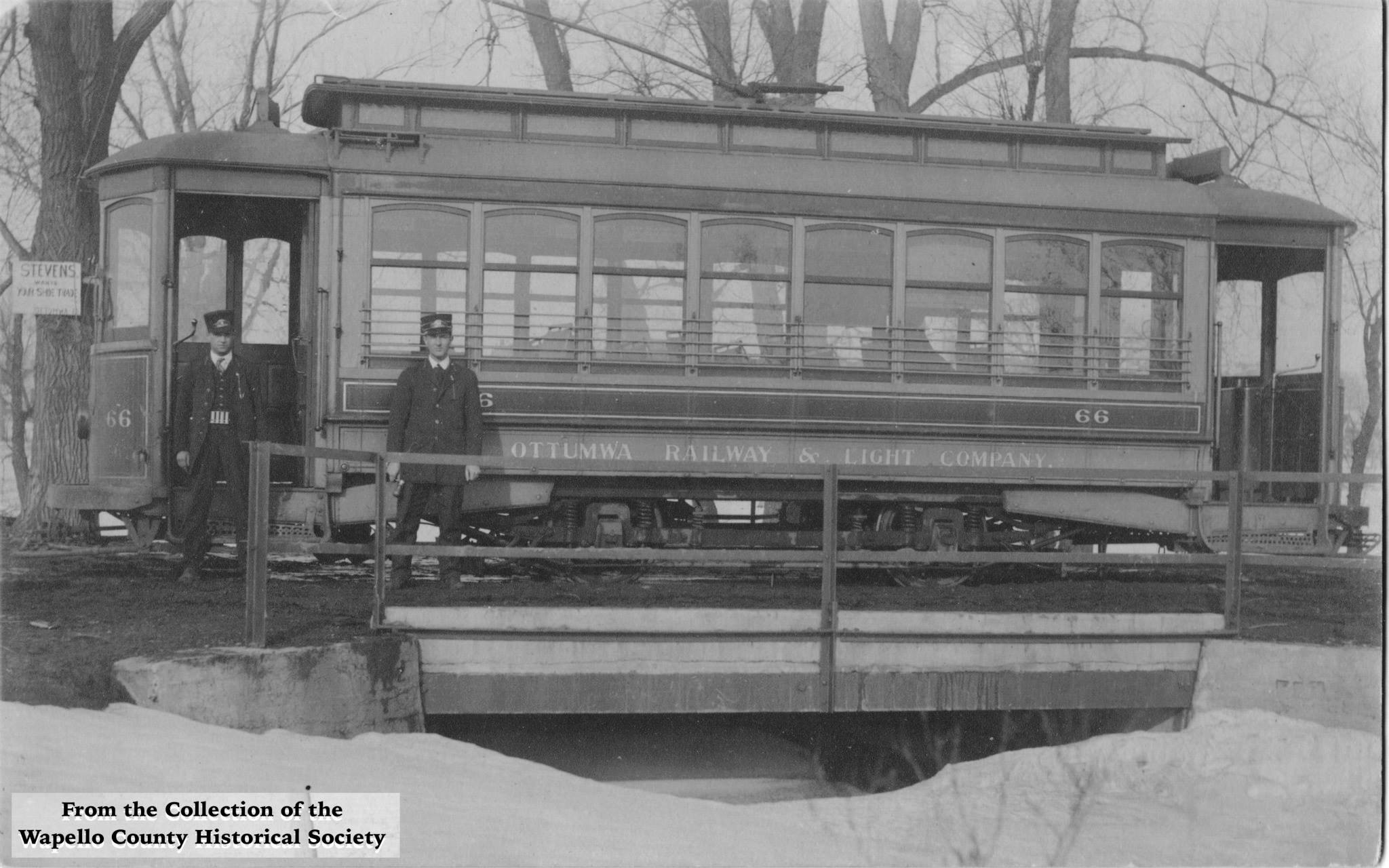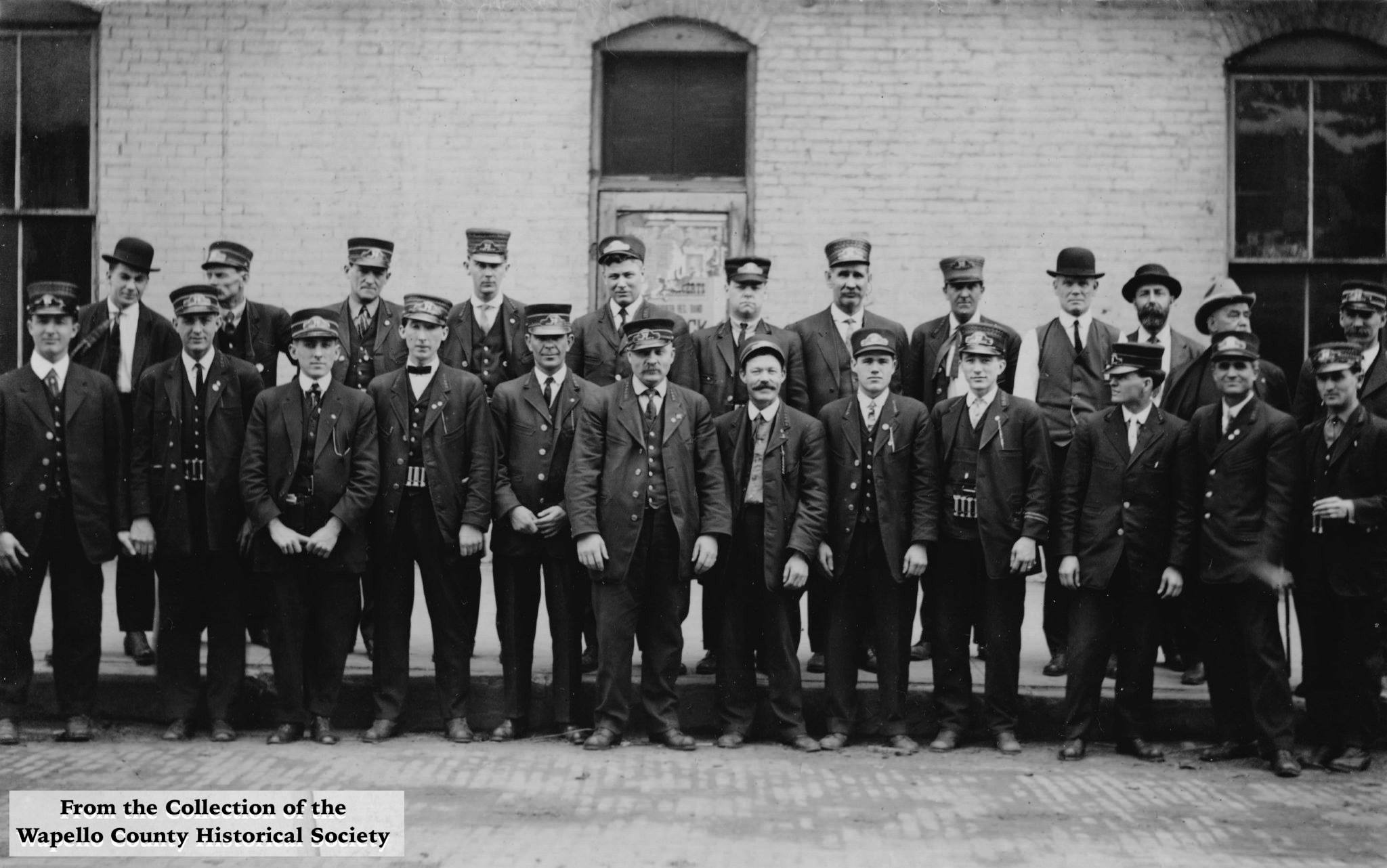“Gen. John M. Hedrick, a leading, energetic and public spirited citizen of former days, (who was instrumental in securing the Milwaukee road for Ottumwa) founded the city street car system in Ottumwa in 1881. The line was two miles in length, extending from McPherson and Second, east on Second to Market, south on Market to Main, and east on Main to Cherry Street. Two cars drawn by mules made up the first rolling stock of the enterprise. The receipts averaged about ten dollars a day. L. E. Gray owned a sanitarium near the east limits of the city. In 1885 he built a horse car line to connect with the Hedrick line at Cherry Street, about a mile in length. It ran east on Main Street to a point a little beyond the terminus of the present East End line. But one car was operated. Two years later R. T. Shea built a horse car line connecting South Ottumwa with the north side. This improvement extended from the cemetery on North Court Street to a point near the terminus of the present Ward Street track and was about three miles in length. It was operated on practically the same streets as the Ward Street and Court Hill lines. The Shea Railway had cars which were in the way of an innovation in that they were heated by hard coal stoves during the winter months. The Shea Company eventually abandoned their Court Hill line, the franchise of which was secured by the Ottumwa Railway Electric & Steam Company, which was organized, franchised and began operations in 1889. The same corporation secured the franchise and property of the Hedrick and Gray street railway companies and in 1891 purchased the balance of the Shea line, which extended across the river.

In 1884 a company of local capitalists organized the Ottumwa Electric Light Company, operated in a small way for a time, and then passed into the hands of the Ottumwa Railway Electric & Steam Company, which was reorganized in 1892 as the Ottumwa Electric Railway, with a capital of $300,000 stock and $260,000 in bonds. This company went into the hands of a receiver in 1896. It was bid in by the bondholders in 1898 at receiver’s sale and reorganized under the name of Ottumwa Electric & Steam Company. The company was again reorganized October 1, 1901, as the Ottumwa Traction & Light Company, which extended its lines the following summer on to Jefferson Street, Sheridan Avenue, and made other desired improvements. A few years thereafter the property east of the power house on Jefferson Street was purchased, the site cleared, and the erection of a new power house began, but while this improvement was under way negotiations were entered into with H. M. Byllesby & Company, of Chicago, for the sale of the plant, which finally took place November 7, 1905, when a reorganization was formed and the name of the corporation became the Ottumwa Railway & Light Company. Under the new management the property was rebuilt and put in first class condition. A new power house and car barns were constructed, old tracks relaid with new, and an extension on Main Street to the Chicago, Milwaukee & St. Paul Railroad crossing laid. Five new summer cars and six Brill semi convertible cars were purchased. The power house was equipped with new machinery and the company fitted out offices and waiting rooms in the large brick building Bon the corner of Second and Market streets.

Today the service and equipment of the street railways in Ottumwa have been brought to a high standard and the utility ranks among the foremost in the state. The acting manager is Charles E. Fahrney, who has been connected with the Ottumwa Railway & Light Company through every administration from the time it was founded by W. R. Daum.”
Harrison Lyman Waterman. (1914). History of Wapello County, Iowa.

